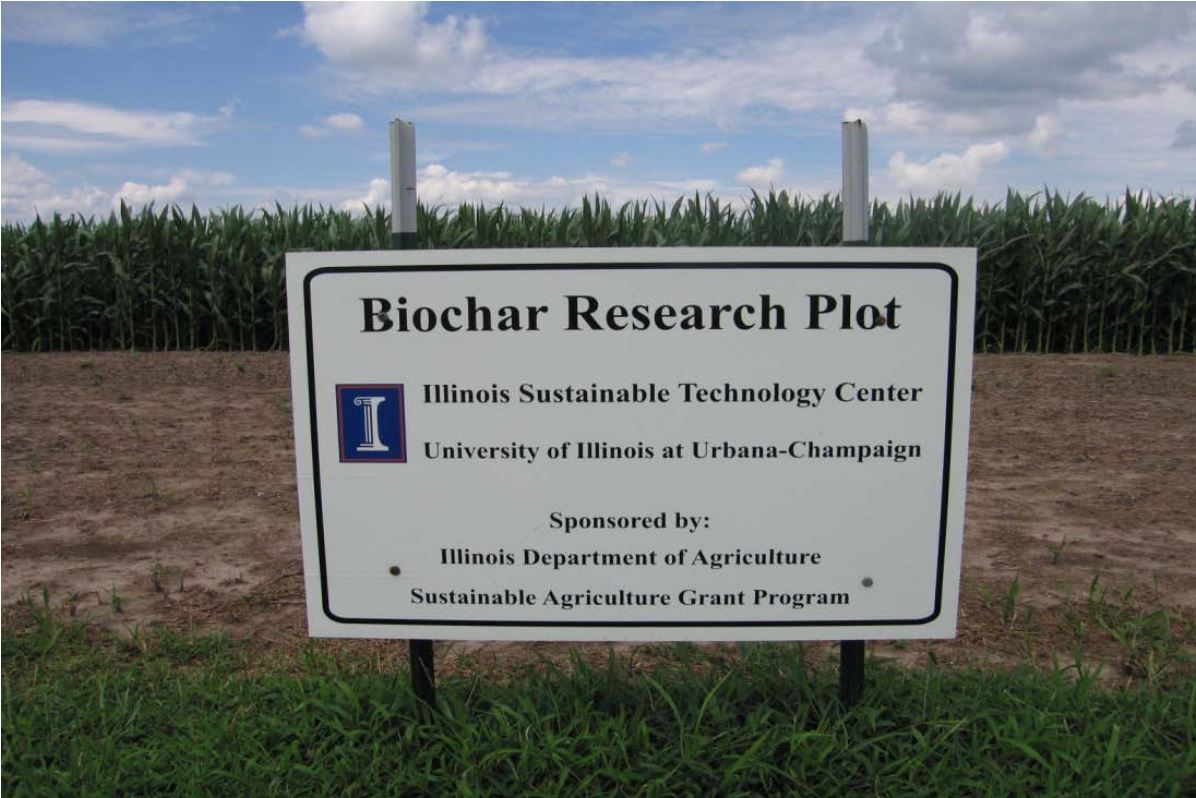Using Biochar as a Soil Amendment for Sustainable Agriculture
In 2010, ISTC scientists Drs. Wei Zheng, BK Sharma, and Kishore
Rajagopalan tested biochar as a soil amendment in a typical corn field
in Illinois as part of a larger goal of promoting sustainable
agricultural practices. The biochar was made from three feedstocks:
- agricultural residues such as corn cobs and corn stover;
- yard wastes including walnut shells and wood chips; and
- by-products from bioenergy such as defatted dried distiller grains (DDGs).
After harvest, the soil organic matter, soil pH, available phosphorus
P1 and P2, and CEC generally increased in the field plots treated with biochar. The increase
in soil organic matter and CEC
showed that fairly large amounts of carbon and exchangeable cations
were introduced by biochar application. The high level of available
phosphorus P1 and P2 after biochar application indicated that the use of
biochar as a soil amendment led to a high retention of nutrients in the
soil. By contrast, the contents of nitrate-N in these biochar-amended
plots were significantly reduced even when undergoing nitrogen
fertilizer application. This further confirms that biochar can sorb
nitrogen fertilizers and inhibit their nitrification and thus the
concentrations of nitrate in the fields with biochar addition were
largely decreased.
In addition, soil analysis after harvest revealed that soil organic matter, soil pH, available phosphorus P1 and P2, and CEC
were generally higher in plots with the application of biochar and
fertilizer than for fields with the application of fertilizer alone. And
in fact, biochar mixed with 50% of the recommended amount of fertilizer
showed a higher yield of corn (measured in bushels per acre) than the
control (no biochar) at the 100% recommended fertilizer application.
Therefore, biochar as a soil amendment can improve soil quality by
increasing soil organic matter, pH, and CEC, and holding nutrients in soils.
This project was funded by the Illinois Department of Agriculture (Grant Number: SA 09-37).

